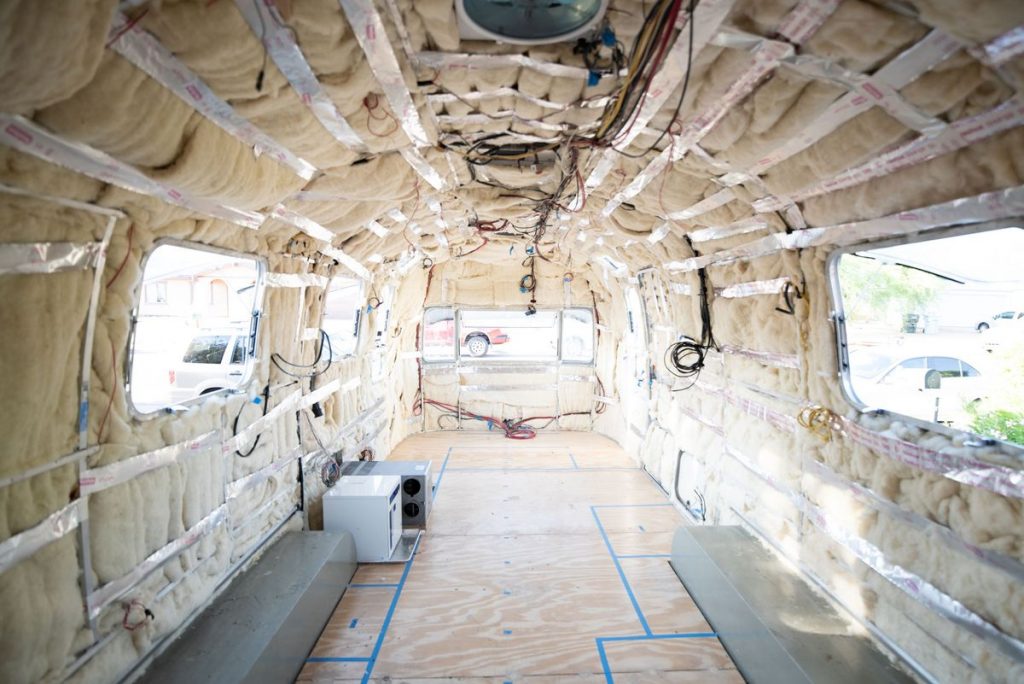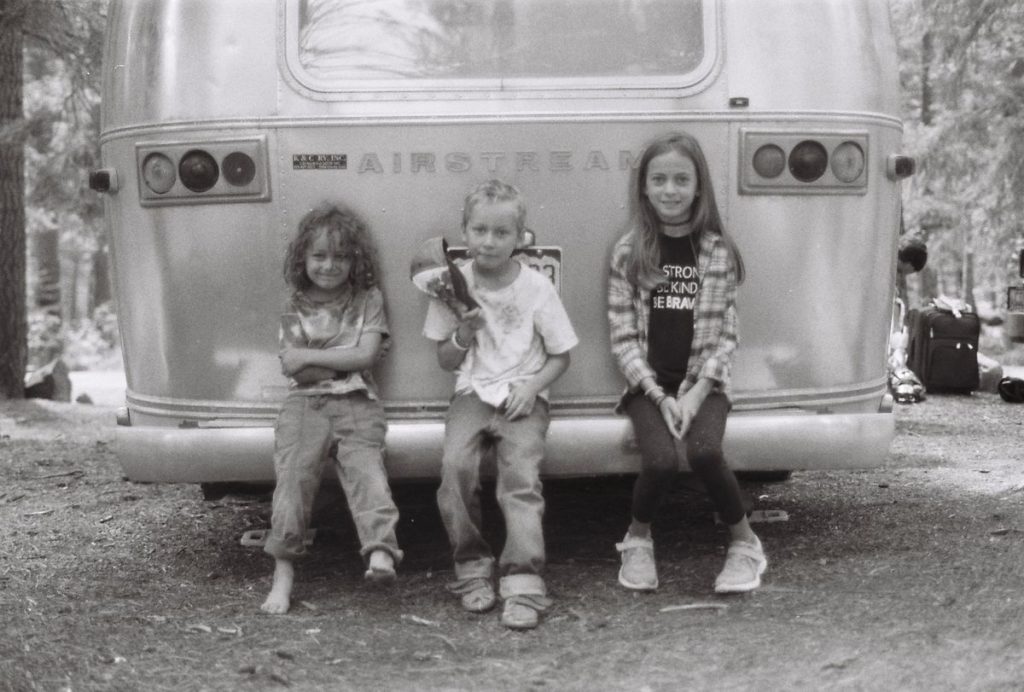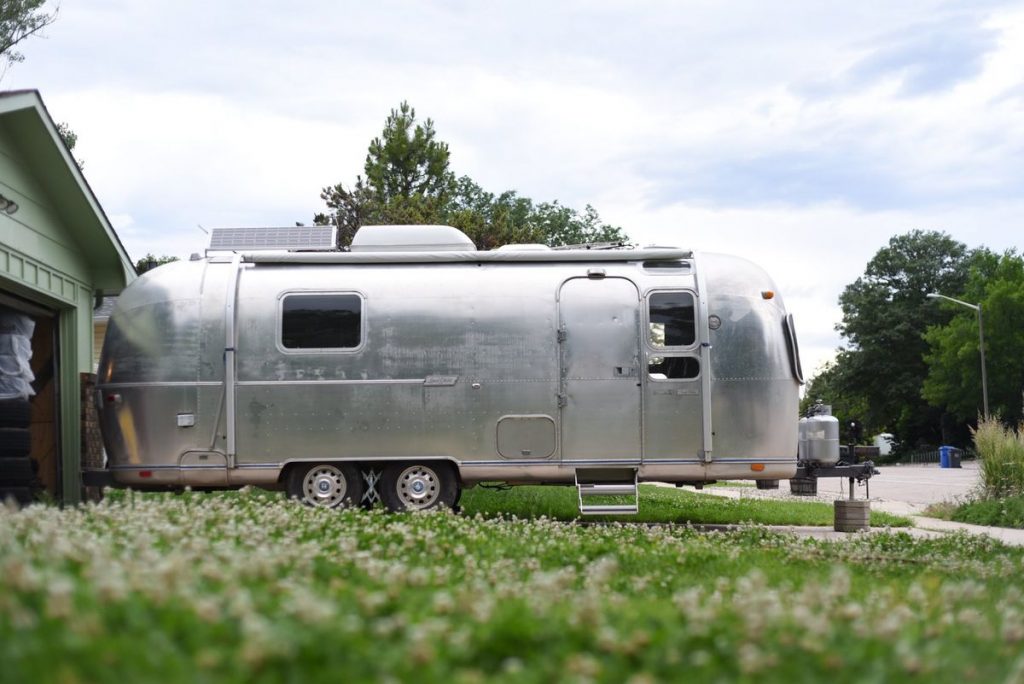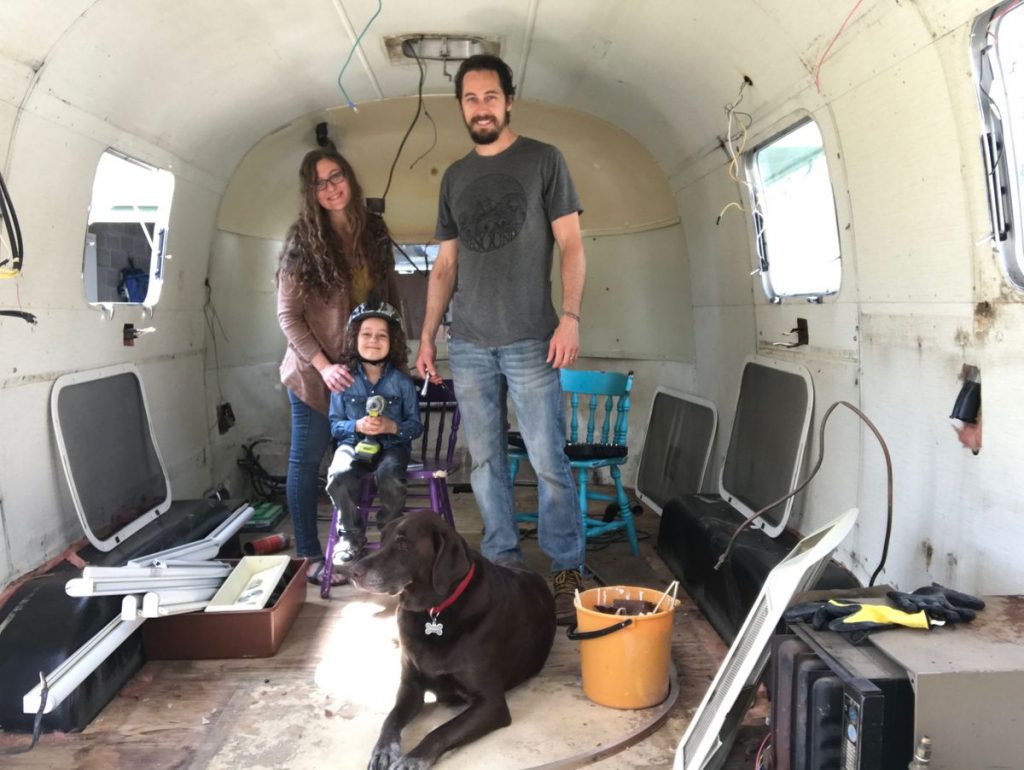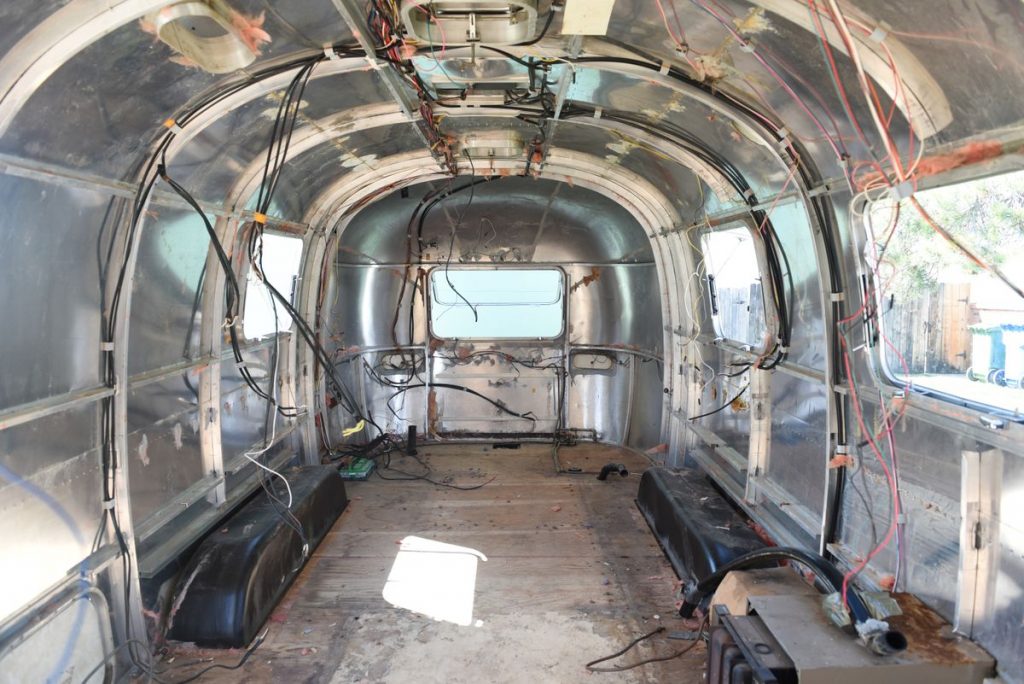Back in the first weeks of our renovation in the demo phase we took down the skins and removed all the old pink fiberglass insulation. It was terrible. It was toxic and filthy. I wore long sleeves, gloves, goggles and a mask and still my skin itched and my throat burned. We decided right there and then that when it came time to put in new insulation we would choose a better and more natural product.


We began to research and discovered that there are a lot of insulation options and most are not awesome. We wanted our insulation to be sustainable to produce, safe and enjoyable to install, create a healthy indoor air quality for our little home, help to keep us warm in the cold and cool in the hot, control moisture, be mold resistant and dampen sound. Our research led us to Havelock wool which checked all of our boxes for what we wanted from our insulation. Havelock wool is literally sheep’s wool, period. Nothing else, just wool sheared from happy sheep roaming around the green hills of New Zealand. As I researched I realized that God did a pretty cool job designing sheep, their wool keeps them warm or cool as needed and keeps them dry, just like what we wanted for our trailer. I can’t see any reason to fill our home with some toxic nonsense that pollutes the earth when I could simply use sheep’s wool.
To fill our 25 ft Airstream and the entire belly we ordered 7 bags. They come in single or double packs so we did three doubles and a single. We used one double pack for the belly and the rest inside.
We started insulating under the trailer in the belly pan. We completely replaced our aluminum so we insulated as we put up the new pieces. We took each piece of aluminum and riveted it to the frame on 3 sides leaving one of the large sides open. We then took bats of wool and folded them in half (to better fill the 5 inches between the subfloor and the aluminum) then we just shoved them in. For the areas that had 2 or more frame sections we used a broom handle (high tech tool) to sort of poke it through the openings in the frame. Once it was all filled up we riveted the final side. We did the same thing on the banana wraps.


The trailer has a lot of open space between the ribs so we had to figure out how to get the wool up and keep it from sliding down the curved walls or falling from the ceiling until we got the skins back in, which would permanently hold the wool in place. The insulation installation (say that 5 times fast) like all the other projects doesn’t seem to have one way or even a right or wrong way to do it, there are many different ways that people do things. So we sifted through the online advice and blogs, considered it all, talked about it, thought some more and ultimately came up with our own way. It seems like the most common thing to do is to use a spray adhesive to spray the shell and stick the wool to it. I imagine this would be fairly easy and effective but it didn’t seem like an attractive option to me. One of the biggest things I love about wool is that it is non-toxic and safe to install and breathe without protective gear. I felt like spraying a nasty stinky chemical would defeat part of the purpose. So we decided on no glue. We used Nashua 324A tape which has a paper backing. We peeled off the ends to attach it from rib to rib to create a strap and then simply slid the wool behind it. We also used all the wires and plumbing and basically shoved the wool behind anything we could to help hold it up.




The end caps have really large areas with nowhere to connect the “straps” so I taped directly to the shell in pieces the width of the wool sheets. Then went back and added a second layer connecting the tape basically anywhere I could find a place for it to stick and tucking pieces behind other pieces. This method worked well and accomplished the goal of getting the wool up without any chemicals.


It took us two workdays to put up the wool inside the trailer and it was one of the best and most enjoyable projects so far. I loved that because the wool is natural and safe, the whole family could be part of the project. The kids helped. The dog did a great job keeping the wool warm by laying on it. We turned on the music, danced around and had a lot of fun installing. I would 10 out of 10 recommend wool for your Airstream, van, bus or whatever project you need insulation for.



